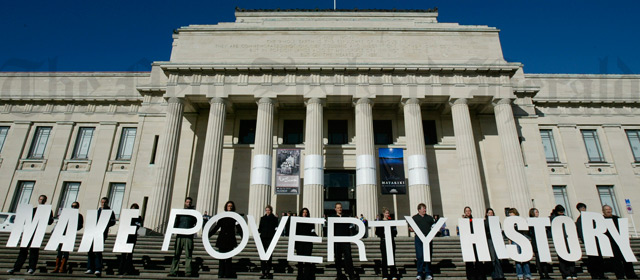Story summary
Aid up to the 1940s
From the 19th century missionaries provided schooling and medical care in the Pacific. In the 20th century New Zealand funded education, health and infrastructure in its territories (Cook Islands, Niue, Western Samoa and Tokelau).
After the Second World War European colonies began to become independent nations. New Zealand adopted the idea of supporting development in poorer countries by giving assistance and resources.
Pacific aid
As New Zealand’s Pacific territories became independent in the 1960s and 1970s, New Zealand gave aid in the form of projects, including help with agriculture, forestry and road building.
Growth of aid
Aid increased under the 1972–75 Labour government. New Zealand supported economic development in Asian and Pacific countries, including through the Colombo Plan, which funded Asian students to study in New Zealand. The government set a goal to give 1% of gross national income in aid, but this target was never achieved.
Non-government aid agencies included CORSO and VSA (Volunteer Service Abroad).
Declining aid
Aid was reduced in the 1990s, and focused more on encouraging development of markets where New Zealand companies could trade. Non-government organisations such as Oxfam, World Vision and UNICEF began working in New Zealand.
Internationally, aid began to focus on getting rid of poverty and supporting governments to deliver services.
NZAID
In 2002 a new government agency, NZAID, was set up. It focused on alleviating poverty. Aid went to Melanesian countries, which were poorer than Polynesian countries. Aid more than doubled between 1999 and 2009, and there was increased funding to help after natural disasters such as the Asian tsunami of 2004. Aid was used to promote political stability in countries such as East Timor and the Solomon Islands.
In 2009 NZAID became part of the Ministry of Foreign Affairs and Trade, and its focus became promoting economic development.
The government remained the main source of aid, although this was sometimes distributed by other agencies.





